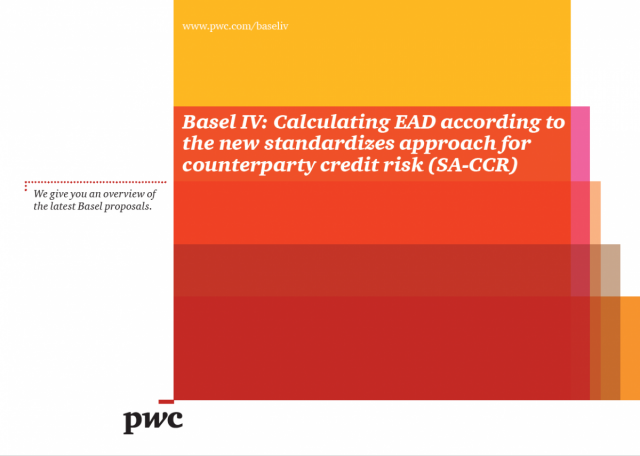

The multiplier in the PFE formula serves to reduce the add-on for over collateralisation as in practice many banks hold excess collateral precisely to offset potential increases in exposure represented by the add-on.ġ48. Interest Rate Basis Swaps must be in separate hedging sets for each pair of risk factors, so Libor 3m vs 6m form a single hedging set, one that is distinct from Libor 1m vs 3m and FedFunds vs Libor 3m. Long and short positions in the same hedging set are permitted to fully offset each other within maturity categories across maturity categories, partial offset is recognised. Hedging sets are further divided into maturity categories.
Sa ccr full#
Add-ons for an asset class require the use of hedging sets, which are transactions within a single netting set within which partial or full offsetting is recognised in the methodology.įor Interest rate derivatives a hedging set consists of all derivatives that reference interest rates of the same currency such as USD, EUR, JPY, etc. PFE add-ons are calculated for each asset class within a netting set and then aggregated. NICA is Net Independent Collateral Amount and represents the the collateral (other than VM) posted by the counterparty that we may keep upon default, the amount of which does not change in response to the value of transactions it secures and/or the Independent Amount (IA) parameter as defined in ISDA documentation, less any unsegregated collateral posted by us to the counterparty. TH is the positive threshold before the counterparty must send us collateral and MTA is the minimum transfer amount, both of which are zero for Clearing and are usually non-zero for ISDA CSAs. Where V and C are as before, and the term TH + MTA – NICA represents the largest exposure that would not trigger a VM call and it contains levels of collateral that need to be always maintained.

10%) while non-cash collateral posted to the counterparty is increased by the haircut.įor margined transactions, the formula is: For non-cash collateral received from the counterparty the value is decreased using a haircut (e.g. Where V is the sum of the MTMs of derivative transactions in the netting set and,Ĭ is the haircut value of net collateral held, where the haircut reflects the potential change in value of non-cash collateral over a 1-year time period. Recall that exposure is when the counterparty owes us (positive MTM) and not when we owe the counterparty (negative MTM) and we can only use the negative MTM trades to offset positive MTMs, when they are both under the same Netting Agreement and so subject to novation.įor unmargined transactions, the Replacement Cost formula is: Replacement Cost is calculated at the netting set level, so positive and negative mark-to-markets (MTMs) of trades are offset only when they are within the same netting set. Potential Future Exposure add-on represents an potential increase in exposure over a 1-year time horizon for unmargined transactions or a MPOR of 5d, 10d or 20d for margined transactions. Replacement Cost captures the loss that would occur if a counterparty were to default and was closed out of it’s transactions immediately.

Where alpha equal 1.4, RC is Replacement Cost and PFE is Potential Future Exposure.

Exposure at DefaultĮxposure at Default (EAD) is calculated for each counterparty using the formula: The full document is here. SA-CCR replaces the current non-internal model approaches, the Current Exposure Method (CEM) of 1995 and the Standardised Method (SM) of 2005. The majority of banks use CEM as relatively few firms have Internal Model Method (IMM) approval from their regulator. In March 2014, the Basel Committee on Banking Supervision ( BCBS) published is Standardised Approach (SA-CCR) for measuring exposure at default (EAD) for counterparty credit risk (CCR).
Sa ccr free#
UPDATE: We now offer free 14-day trials for our SA-CCR for Excel product Background In this article I will look at the SA-CCR methodology as applicable to interest rate swaps. It is particularly important for Derivatives as it provides for improved netting benefit and recognition of margin for both cleared and bi-lateral trades. SA-CCR is required for Credit Risk Capital, as well as Exposures to CCPs and the Leverage Ratio. On 1 January 2017, the Standardised approach for measuring counterparty credit risk exposures (SA-CCR) will take effect.


 0 kommentar(er)
0 kommentar(er)
